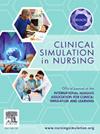The effect of three different simulation methods used in urinary catheterization training
IF 2.5
3区 医学
Q1 NURSING
引用次数: 0
Abstract
Background
This study was designed as a randomized study to determine the effects of three different simulation methods used in urinary catheterization training on nursing students' skills, satisfaction and self-confidence.
Method
The students were divided into three groups and each group experienced urinary catheterization with a different simulation method.
Results
Students' skill levels from the highest to lowest were determined as the virtual reality simulation group, task-trainer simulation group, high-fidelity simulation group and there was a statistically significant difference between their mean scores. It was determined that the students' satisfaction and self-confidence total score averages were similar in the virtual reality simulation group and the task-trainer simulation group, and were significantly higher than the high-fidelity simulation group.
Conclusion
The findings obtained from the research show that it is appropriate to use virtual reality simulation method and task-trainer simulation method in urinary catheter training of first-year nursing students.
三种不同模拟方法在导尿训练中的效果
本研究为随机研究,旨在探讨三种不同的模拟方法在导尿训练中对护生技能、满意度和自信心的影响。方法将学生分为三组,每组采用不同的模拟方法进行导尿。结果学生的技能水平由高到低依次为虚拟现实模拟组、任务教练模拟组、高保真模拟组,平均分差异有统计学意义。结果表明,虚拟现实模拟组和任务训练师模拟组学生的满意度和自信心总分均值相近,且显著高于高保真度模拟组。结论研究结果表明,在护理一年级学生导尿训练中,采用虚拟现实模拟方法和任务训练师模拟方法是合适的。
本文章由计算机程序翻译,如有差异,请以英文原文为准。
求助全文
约1分钟内获得全文
求助全文
来源期刊

Clinical Simulation in Nursing
NURSING-
CiteScore
5.50
自引率
15.40%
发文量
107
期刊介绍:
Clinical Simulation in Nursing is an international, peer reviewed journal published online monthly. Clinical Simulation in Nursing is the official journal of the International Nursing Association for Clinical Simulation & Learning (INACSL) and reflects its mission to advance the science of healthcare simulation.
We will review and accept articles from other health provider disciplines, if they are determined to be of interest to our readership. The journal accepts manuscripts meeting one or more of the following criteria:
Research articles and literature reviews (e.g. systematic, scoping, umbrella, integrative, etc.) about simulation
Innovative teaching/learning strategies using simulation
Articles updating guidelines, regulations, and legislative policies that impact simulation
Leadership for simulation
Simulation operations
Clinical and academic uses of simulation.
 求助内容:
求助内容: 应助结果提醒方式:
应助结果提醒方式:


